Tag Archives: National Marine Fisheries Service
U.S. to Auction 79,000 Acres Offshore New York for Wind Energy
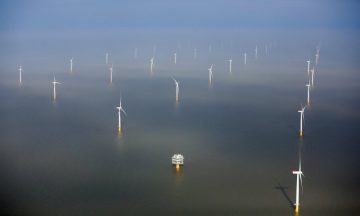 The United States Department of the Interior and the Bureau of Ocean Energy Management (BOEM) announced that 79,350 acres offshore New York will be offered in a December 15 commercial wind lease sale. The New York Wind Energy Area starts approximately 11.5 nautical miles from Jones Beach, New York, on Long Island. From its western edge, the area extends approximately 24 miles southeast at its longest portion. The lease area consists of five full Outer Continental Shelf blocks and 143 sub-blocks. After reviewing comments received on the environmental assessment, BOEM removed about 1,780 acres from the lease area due to environmental concerns regarding a seafloor feature known as the Cholera Bank. In a comment letter, the National Marine Fisheries Service identified the Cholera Bank feature as a sensitive habitat to be avoided for the placement of structures. As a result of this removal, the revised lease area will be approximately two percent smaller than the lease area considered in the proposed sale notice. In response to concerns raised by commercial fishing interests, BOEM also has included a lease requirement for the lessee to develop a publicly available fisheries communications plan and work with a fisheries liaison to facilitate communication with the fishing industry. Read the rest here 16:09
The United States Department of the Interior and the Bureau of Ocean Energy Management (BOEM) announced that 79,350 acres offshore New York will be offered in a December 15 commercial wind lease sale. The New York Wind Energy Area starts approximately 11.5 nautical miles from Jones Beach, New York, on Long Island. From its western edge, the area extends approximately 24 miles southeast at its longest portion. The lease area consists of five full Outer Continental Shelf blocks and 143 sub-blocks. After reviewing comments received on the environmental assessment, BOEM removed about 1,780 acres from the lease area due to environmental concerns regarding a seafloor feature known as the Cholera Bank. In a comment letter, the National Marine Fisheries Service identified the Cholera Bank feature as a sensitive habitat to be avoided for the placement of structures. As a result of this removal, the revised lease area will be approximately two percent smaller than the lease area considered in the proposed sale notice. In response to concerns raised by commercial fishing interests, BOEM also has included a lease requirement for the lessee to develop a publicly available fisheries communications plan and work with a fisheries liaison to facilitate communication with the fishing industry. Read the rest here 16:09
Editorial: Fishing essential in monetary and cultural ways
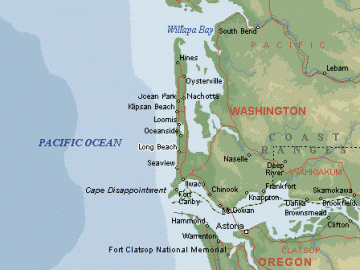 For fishing communities, the National Oceanic and Atmospheric Administration’s annual publication about commercial landings makes great reading. As we’ve observed in the past, “Fisheries of the United States” is interesting here in much the same way crop reports are a topic of fascination for farmers. Make no bones about it: Irrespective of decades of impressive economic diversification, the Lower Columbia and nearby places like Garibaldi, Newport, Willapa Bay and Westport, Washington, are fishing communities in essential cultural and monetary ways. Fishing dollars bounce around coastal towns and bolster the business climate in much the way fish fertilizer makes plants prosper. Analysis of multiyear trends points out some disturbing news about the strength of commercial fisheries on the Lower Columbia. The 2015 edition of the annual fisheries compendium from the National Marine Fisheries Service finds Astoria-area landings at something of a low ebb. Read the editorial here 09:10
For fishing communities, the National Oceanic and Atmospheric Administration’s annual publication about commercial landings makes great reading. As we’ve observed in the past, “Fisheries of the United States” is interesting here in much the same way crop reports are a topic of fascination for farmers. Make no bones about it: Irrespective of decades of impressive economic diversification, the Lower Columbia and nearby places like Garibaldi, Newport, Willapa Bay and Westport, Washington, are fishing communities in essential cultural and monetary ways. Fishing dollars bounce around coastal towns and bolster the business climate in much the way fish fertilizer makes plants prosper. Analysis of multiyear trends points out some disturbing news about the strength of commercial fisheries on the Lower Columbia. The 2015 edition of the annual fisheries compendium from the National Marine Fisheries Service finds Astoria-area landings at something of a low ebb. Read the editorial here 09:10
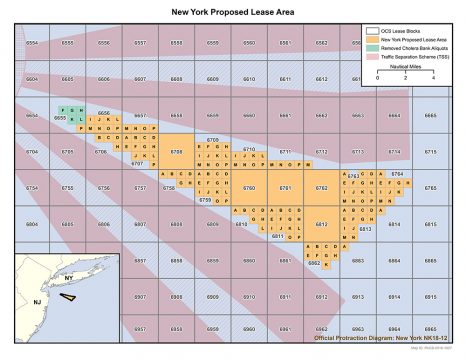
Department of the Interior to auction over 79,000 acres offshore New York for wind development
U.S. Department of the Interior (DOI) Secretary of the Interior Sally Jewell and the Bureau of Ocean Energy Management (BOEM) Director Abigail Ross Hopper announced that 79,350 acres offshore New York will be offered in a December 15 commercial wind-lease sale. The New York Wind Energy Area starts approximately 11.5 nautical miles (nm) from Jones Beach, NY. From its western edge, the area extends approximately 24 nm southeast at its longest portion. The lease area consists of five full Outer Continental Shelf blocks and 143 sub-blocks. After reviewing comments received on the Environmental Assessment, BOEM removed about 1,780 acres from the lease area due to environmental concerns regarding a seafloor feature known as the Cholera Bank. In a comment letter, the National Marine Fisheries Service identified the Cholera Bank feature as a sensitive habitat to be avoided for the placement of structures. As a result of this removal, the revised lease area will be approximately two percent smaller than the lease area considered in the Proposed Sale Notice. Read the rest here 13:55
National Marine Fisheries Service issues annual report on Fisheries of the United States, 2015
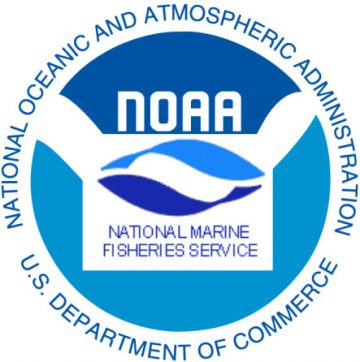 This publication is the annual National Marine Fisheries Service (NMFS) yearbook of fishery statistics for the United States for 2015. The report provides data on U.S. recreational catch and commercial fisheries landings and value as well as other aspects of U.S. commercial fishing. In addition, data are reported on the U.S. fishery processing industry, imports and exports of fishery-related products, and domestic supply and per capita consumption of fishery products. Information in this report came from many sources. Field offices of NMFS, with the generous cooperation of the coastal states and Regional Fishery Information Networks, collected and compiled data on U.S. commercial landings and processed fishery products. The NMFS Fisheries Statistics Division in Silver Spring, MD, managed the collection and compilation of recreational statistics, in cooperation with various States and Interstate Fisheries Commissions, and tabulated and prepared all data for publication. Sources of other data appearing in this publication are: U.S. Census Bureau, U.S. Bureau of Labor Statistics, U.S. Department of the Interior, U.S. Department of Agriculture, and the Food and Agriculture Organization (FAO) of the United Nations. Read the press release here, Read the full report here 09:34
This publication is the annual National Marine Fisheries Service (NMFS) yearbook of fishery statistics for the United States for 2015. The report provides data on U.S. recreational catch and commercial fisheries landings and value as well as other aspects of U.S. commercial fishing. In addition, data are reported on the U.S. fishery processing industry, imports and exports of fishery-related products, and domestic supply and per capita consumption of fishery products. Information in this report came from many sources. Field offices of NMFS, with the generous cooperation of the coastal states and Regional Fishery Information Networks, collected and compiled data on U.S. commercial landings and processed fishery products. The NMFS Fisheries Statistics Division in Silver Spring, MD, managed the collection and compilation of recreational statistics, in cooperation with various States and Interstate Fisheries Commissions, and tabulated and prepared all data for publication. Sources of other data appearing in this publication are: U.S. Census Bureau, U.S. Bureau of Labor Statistics, U.S. Department of the Interior, U.S. Department of Agriculture, and the Food and Agriculture Organization (FAO) of the United Nations. Read the press release here, Read the full report here 09:34
Oceana bites back at proposed rule for US dusky shark conservation
 U.S. President Barack Obama and his administration have released a proposal addressing the chronic overfishing of dusky sharks in U.S. waters. But suggested rule comes up short on its objective, according to marine conservation group Oceana. Oceana, which sued the federal government in 2015 in a challenge to its policies on dusky sharks, has deemed the proposed rule as “grossly inadequate,” and charged that that the National Marine Fisheries Service fails to offer measurable means to stop dusky shark decline and facilitate the species’ recovery. Over the past two decades, dusky shark populations across the Atlantic and Gulf coasts have dropped by 65 percent as a result of bycatch and overfishing, said Oceana. Because the species is slow to grow and reproduces at low rates, recent studies suggest that the population would need between 70 and 180 years to recover. Read the story here 12:06
U.S. President Barack Obama and his administration have released a proposal addressing the chronic overfishing of dusky sharks in U.S. waters. But suggested rule comes up short on its objective, according to marine conservation group Oceana. Oceana, which sued the federal government in 2015 in a challenge to its policies on dusky sharks, has deemed the proposed rule as “grossly inadequate,” and charged that that the National Marine Fisheries Service fails to offer measurable means to stop dusky shark decline and facilitate the species’ recovery. Over the past two decades, dusky shark populations across the Atlantic and Gulf coasts have dropped by 65 percent as a result of bycatch and overfishing, said Oceana. Because the species is slow to grow and reproduces at low rates, recent studies suggest that the population would need between 70 and 180 years to recover. Read the story here 12:06
Pacific Bluefin Tuna Heads Toward Protection
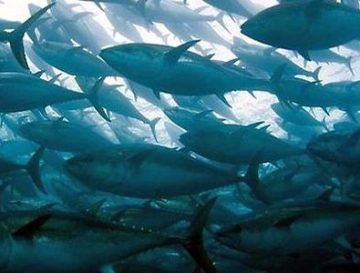 Thirteen conservation groups and a former National Fisheries biologist petitioned for federal protection for Pacific bluefin tuna, and the marine agency agreed listing may be warranted. The National Marine Fisheries Service (NMFS) announced Tuesday that it will begin a 12-month status review of the iconic fish as the first step in the long process to secure Endangered Species Act protection for the overfished species. The Center for Biological Diversity, a frequent petitioner and litigator on behalf of imperiled species, was joined by Earthjustice, Defenders of Wildlife, WildEarth Guardians, Sierra Club, Turtle Island Restoration Network, the Ocean Foundation, Center for Food Safety, Greenpeace, Mission Blue, Recirculating Farms Coalition, The Safina Center, SandyHook SeaLife Foundation, and Jim Chambers, a retired NMFS biologist, owner of Prime Seafood sustainable seafood restaurant supply company and member of the Seafood Choices Alliance. Read the rest here 08:42
Thirteen conservation groups and a former National Fisheries biologist petitioned for federal protection for Pacific bluefin tuna, and the marine agency agreed listing may be warranted. The National Marine Fisheries Service (NMFS) announced Tuesday that it will begin a 12-month status review of the iconic fish as the first step in the long process to secure Endangered Species Act protection for the overfished species. The Center for Biological Diversity, a frequent petitioner and litigator on behalf of imperiled species, was joined by Earthjustice, Defenders of Wildlife, WildEarth Guardians, Sierra Club, Turtle Island Restoration Network, the Ocean Foundation, Center for Food Safety, Greenpeace, Mission Blue, Recirculating Farms Coalition, The Safina Center, SandyHook SeaLife Foundation, and Jim Chambers, a retired NMFS biologist, owner of Prime Seafood sustainable seafood restaurant supply company and member of the Seafood Choices Alliance. Read the rest here 08:42
Fishermen, state, in flux after circuit court overturns state control of Cook Inlet salmon
 In Cook Inlet, managing the salmon runs for commercial, sport and subsistence interests is so controversial, it’s often called a fish war. A group of commercial fishermen who think the state is mismanaging the fisheries, have won the latest battle. A three-judge panel at the U.S. Ninth Circuit Court of Appeals ruled last week that the area needs federal oversight. But no one knows exactly what that will mean. The United Cook Inlet Drift Association and the Cook Inlet Fishermen’s Fund say that instead of addressing habitat problems or fighting invasive species that eat salmon in Cook Inlet – the state simply restricted commercial fishing. So the fishing groups sued the National Marine Fisheries Service. They argued against a 2011 decision to remove several Alaska salmon fisheries — including Cook Inlet — from federal management and transfer the responsibility of managing salmon to the state. A three-judge panel of the U.S. Ninth Circuit Court of Appeals agreed. For commercial fishermen like Brian Harrison, in Homer, the court’s decision is a victory. But, he’s not sure what to expect going forward. Read the story here 18:53
In Cook Inlet, managing the salmon runs for commercial, sport and subsistence interests is so controversial, it’s often called a fish war. A group of commercial fishermen who think the state is mismanaging the fisheries, have won the latest battle. A three-judge panel at the U.S. Ninth Circuit Court of Appeals ruled last week that the area needs federal oversight. But no one knows exactly what that will mean. The United Cook Inlet Drift Association and the Cook Inlet Fishermen’s Fund say that instead of addressing habitat problems or fighting invasive species that eat salmon in Cook Inlet – the state simply restricted commercial fishing. So the fishing groups sued the National Marine Fisheries Service. They argued against a 2011 decision to remove several Alaska salmon fisheries — including Cook Inlet — from federal management and transfer the responsibility of managing salmon to the state. A three-judge panel of the U.S. Ninth Circuit Court of Appeals agreed. For commercial fishermen like Brian Harrison, in Homer, the court’s decision is a victory. But, he’s not sure what to expect going forward. Read the story here 18:53
Ushering industrial aquaculture into the Pacific Islands Region EEZ is anything but sustainable
 Right now, anyone can throw a cage into the open ocean within the Economic Enterprise Zone and begin an aquaculture operation, said Joshua DeMello, of the Western Pacific Regional Fishery Management Council. The beginning of that aquaculture management program for the Pacific Islands Region is in the works, under the eye of the National Oceanic and Atmospheric Administration National Marine Fisheries Service and in conjunction with Western Pacific Regional Fishery Management Council. The entities are preparing a programmatic environmental impact statement (PEIS) analyzing the possible environmental impacts of the proposed management program and alternatives. “The purpose of it is to develop a management program to support sustainable, economically sound aquaculture in the Pacific Island Region,” DeMello said. The PEIS process looks at options for permit duration, whether cages should be metal or net pens, and allowable species. But ushering industrial aquaculture into the EEZ is anything but sustainable, poses a threat to the environment and could impact commercial fishing, according to a biologist. Read the story here 20:13
Right now, anyone can throw a cage into the open ocean within the Economic Enterprise Zone and begin an aquaculture operation, said Joshua DeMello, of the Western Pacific Regional Fishery Management Council. The beginning of that aquaculture management program for the Pacific Islands Region is in the works, under the eye of the National Oceanic and Atmospheric Administration National Marine Fisheries Service and in conjunction with Western Pacific Regional Fishery Management Council. The entities are preparing a programmatic environmental impact statement (PEIS) analyzing the possible environmental impacts of the proposed management program and alternatives. “The purpose of it is to develop a management program to support sustainable, economically sound aquaculture in the Pacific Island Region,” DeMello said. The PEIS process looks at options for permit duration, whether cages should be metal or net pens, and allowable species. But ushering industrial aquaculture into the EEZ is anything but sustainable, poses a threat to the environment and could impact commercial fishing, according to a biologist. Read the story here 20:13
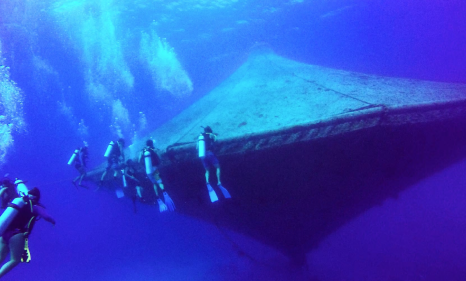
The government wants more offshore fish farms, but no one is biting
Off the coast of San Diego, America’s eighth largest city, commercial fishermen harvest about 1,100 metric tons of seafood from the Pacific every year. That sounds like a lot. But it isn’t much to Don Kent, who says he can do better with just one fish farm. If Kent gets his way, he would raise 5,000 metric tons of yellowtail jack and white sea bass in a grid of net pens measuring about a square mile, anchored four miles off San Diego in federal waters. The species are prized in Southern California sushi restaurants, which now serve their customers imported fish almost exclusively, most of it from China, Japan, Greece or Chile. The US imports about 91% of its seafood. Whether consumers know it or not, about half of that is farmed in aquaculture facilities much like the one Kent wants to build. While the federal government has permitted shellfish farming for years, it didn’t allow farming of finfish such as bass and salmon until earlier this year. Read the story here 10:41
New York State Extends Commercial Black Sea Bass Season to October 13th
 Governor Andrew M. Cuomo announced that the state has extended the commercial black sea bass fishing season to October 13. Originally scheduled to close on September 17, the recent tropical storm contributed to a lower rate of black sea bass landings, making New York’s waters prime for an extended harvest season. After review of the most recent landings data, Department of Environmental Conservation and Division of Marine Resources staff determined that the commercial season could be extended. The current trip limit of 50 lbs. per day remains in effect. For certain commercially harvested species like black sea bass, annual commercial quota allocations are provided by the National Marine Fisheries Service and the Atlantic States Marine Fisheries Commission. Fishery management tools such as fishing trip limits and quota management plans have been implemented for quota managed species. The Department of Environmental Conservation continues to work closely with commercial fishermen to expand black sea bass harvest opportunities, and also has called for a revised, more equitable federal management strategy to improve the fishery experience. Link 19:06
Governor Andrew M. Cuomo announced that the state has extended the commercial black sea bass fishing season to October 13. Originally scheduled to close on September 17, the recent tropical storm contributed to a lower rate of black sea bass landings, making New York’s waters prime for an extended harvest season. After review of the most recent landings data, Department of Environmental Conservation and Division of Marine Resources staff determined that the commercial season could be extended. The current trip limit of 50 lbs. per day remains in effect. For certain commercially harvested species like black sea bass, annual commercial quota allocations are provided by the National Marine Fisheries Service and the Atlantic States Marine Fisheries Commission. Fishery management tools such as fishing trip limits and quota management plans have been implemented for quota managed species. The Department of Environmental Conservation continues to work closely with commercial fishermen to expand black sea bass harvest opportunities, and also has called for a revised, more equitable federal management strategy to improve the fishery experience. Link 19:06
Ninth Circuit Sides With Cook Inlet Fishermen
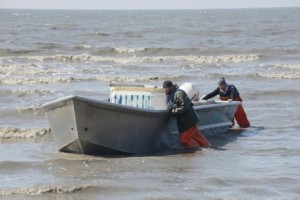 The Ninth Circuit ruled Wednesday that the federal government must manage fisheries in federal waters that require conservation, unless a fishery-management plan cedes control to a state. Reversing a decision from the Alaska Federal Court, the Ninth Circuit panel held that the National Marine Fisheries Service is required by the Magnuson-Stevens Fishery Conservation and Management Act to include the Cook Inlet in its fishery-management plan. It may not hand over control of the inlet to the state of Alaska without first drawing up a plan, according to the 20-page ruling. The North Pacific Fishery Management Council has jurisdiction over Cook Inlet. In 2011, the Council voted and passed Amendment 12 to remove the net-fishing areas from its plan, arguing that the plan was vague on management goals and that the state was the most appropriate management authority. However, the amendment was opposed by the United Cook Inlet Drift Association and the Cook Inlet Fishermen’s Fund, two groups of commercial fishermen. However, the amendment was opposed by the United Cook Inlet Drift Association and the Cook Inlet Fishermen’s Fund, two groups of commercial fishermen. They argued that the state’s failure to deal with carnivorous northern pike and its improper escapement management have contributed to a 51 percent reduction in the sockeye salmon catch since 1981. Read the story here 08:14
The Ninth Circuit ruled Wednesday that the federal government must manage fisheries in federal waters that require conservation, unless a fishery-management plan cedes control to a state. Reversing a decision from the Alaska Federal Court, the Ninth Circuit panel held that the National Marine Fisheries Service is required by the Magnuson-Stevens Fishery Conservation and Management Act to include the Cook Inlet in its fishery-management plan. It may not hand over control of the inlet to the state of Alaska without first drawing up a plan, according to the 20-page ruling. The North Pacific Fishery Management Council has jurisdiction over Cook Inlet. In 2011, the Council voted and passed Amendment 12 to remove the net-fishing areas from its plan, arguing that the plan was vague on management goals and that the state was the most appropriate management authority. However, the amendment was opposed by the United Cook Inlet Drift Association and the Cook Inlet Fishermen’s Fund, two groups of commercial fishermen. However, the amendment was opposed by the United Cook Inlet Drift Association and the Cook Inlet Fishermen’s Fund, two groups of commercial fishermen. They argued that the state’s failure to deal with carnivorous northern pike and its improper escapement management have contributed to a 51 percent reduction in the sockeye salmon catch since 1981. Read the story here 08:14
Charlie Melancon’s Department Of Wrongdoing And Falsehood
 Have you been paying attention to the chaos at hand with the Louisiana Department of Wildlife and Fisheries? It appears that there is a full three-ring circus going on with DWF and its secretary, the former Democrat congressman Charlie Melancon. And after eight months on the job it’s pretty clear that perception among the in-the-know crowd was largely correct. The department is awash in controversy, if not criminality, and those affected by it are furious. To full explain this, we should go back several years to a program set up at the federal level. The Gulf of Mexico Fishery Management Council, which is a federal commission set up to govern offshore fishing in the five Gulf states (Florida, Alabama, Mississippi, Louisiana and Texas), and the National Marine Fisheries Service set up something called the Individual Fishing Quota system, or IFQ, to govern commercial fishing for red snapper. Meaning, the federal government resorted to crony capitalism as a means to govern Gulf red snapper fisheries. If you were a big player in the red snapper harvest before the program got started, you were one of the cronies and your incumbency would be protected. Read the story here. 19:20
Have you been paying attention to the chaos at hand with the Louisiana Department of Wildlife and Fisheries? It appears that there is a full three-ring circus going on with DWF and its secretary, the former Democrat congressman Charlie Melancon. And after eight months on the job it’s pretty clear that perception among the in-the-know crowd was largely correct. The department is awash in controversy, if not criminality, and those affected by it are furious. To full explain this, we should go back several years to a program set up at the federal level. The Gulf of Mexico Fishery Management Council, which is a federal commission set up to govern offshore fishing in the five Gulf states (Florida, Alabama, Mississippi, Louisiana and Texas), and the National Marine Fisheries Service set up something called the Individual Fishing Quota system, or IFQ, to govern commercial fishing for red snapper. Meaning, the federal government resorted to crony capitalism as a means to govern Gulf red snapper fisheries. If you were a big player in the red snapper harvest before the program got started, you were one of the cronies and your incumbency would be protected. Read the story here. 19:20
New Rules Ban Seafood Imports That Don’t Meet Strict U.S. Standards for Marine Mammal Protection
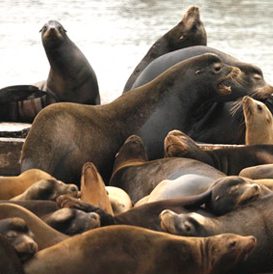 The National Marine Fisheries Service issued regulations Thursday prohibiting seafood imports from nations whose fisheries kill more whales and dolphins than U.S. standards allow. Each year around 650,000 whales, dolphins and other marine mammals are unintentionally caught and killed in fishing gear worldwide. Under the new rule, foreign fishermen must meet the same marine mammal protection standards applied to U.S. fishermen or their fish will be banned from the lucrative American seafood market. The rule is the result of a settlement in a lawsuit brought by conservation groups two years ago. The new rules will be put in place gradually with full implementation by 2022. Exporting nations will now need to track and monitor fisheries and whale, dolphin and other marine mammal populations, modify fishing gear, and may even have to close fishing in some areas to limit entanglement risk. Read the rest here 10:51 Today, NMFS published a final rule implementing import provisions of the.
The National Marine Fisheries Service issued regulations Thursday prohibiting seafood imports from nations whose fisheries kill more whales and dolphins than U.S. standards allow. Each year around 650,000 whales, dolphins and other marine mammals are unintentionally caught and killed in fishing gear worldwide. Under the new rule, foreign fishermen must meet the same marine mammal protection standards applied to U.S. fishermen or their fish will be banned from the lucrative American seafood market. The rule is the result of a settlement in a lawsuit brought by conservation groups two years ago. The new rules will be put in place gradually with full implementation by 2022. Exporting nations will now need to track and monitor fisheries and whale, dolphin and other marine mammal populations, modify fishing gear, and may even have to close fishing in some areas to limit entanglement risk. Read the rest here 10:51 Today, NMFS published a final rule implementing import provisions of the.
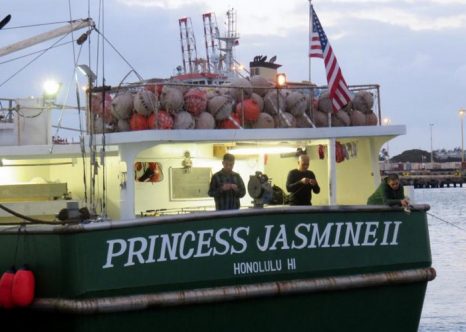
WPFMC asks for transparent analysis of proposed marine monument expansion
The Western Pacific Regional Fishery Management Council on Wednesday agreed to a resolution that asks the U.S. government to address a suite of concerns before acting on the proposed expansion on the Papahānaumokuākea Marine National Monument or MNM in the Northwestern Hawaiian Islands. Council members Suzanne Case, Hawaii Department of Land and Natural Resources chair, and Julie Leialoha, Conservation Council for Hawaii president, voted against the proposal. National Marine Fisheries Service or NMFS Pacific Islands Regional Administrator Michael Tosatto abstained. The resolution requests a “public, transparent, deliberative, documented and science-based process” to address the proposed expansion, which could prohibit fishing in two-thirds of the U.S. exclusive economic zone, i.e., waters out to 200 miles from shore, around Hawaii. The resolution is being sent to President Obama, the White House Council on Environmental Quality and the secretaries of Commerce, the Interior and State. Read the rest here 16:47
Enviro Defense Fund Applauds 9th Circuit’s Pacific whiting fishery ruling
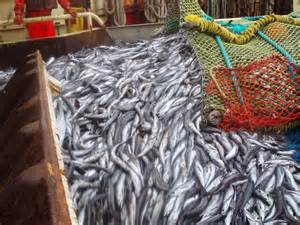 The Ninth Circuit on Wednesday upheld a federal program that limits the number of Pacific whiting, or hake, fishermen can catch off the Northwest Coast. Two fishing companies, Pacific Dawn and Jessie’s Ilwaco Fish Co., sued the Secretary of Commerce and the National Marine Fisheries Service in 2013, claiming the Fisheries Service unreasonably refused to consider fishing activity after 2003 and 2004 when it set new quotas in 2011 and 2013. The three-judge panel Wednesday refused to overturn U.S. District Judge Thelton Henderson’s 2013 grant of summary judgment. Writing for the panel, Judge Sandra Ikuta agreed that the Fisheries Service considered more recent fishing activity when it set quotas but that it “gave greater weight to historic participation” in setting the new limits. Pacific Dawn said it was “disappointed’ with the ruling. “The decision upholds an individual fishing quota program that resulted from no meaningful consideration of current harvests or present participation in the fishery, as Congress requires,” Pacific Dawn said in a statement. Read the rest here 11:59
The Ninth Circuit on Wednesday upheld a federal program that limits the number of Pacific whiting, or hake, fishermen can catch off the Northwest Coast. Two fishing companies, Pacific Dawn and Jessie’s Ilwaco Fish Co., sued the Secretary of Commerce and the National Marine Fisheries Service in 2013, claiming the Fisheries Service unreasonably refused to consider fishing activity after 2003 and 2004 when it set new quotas in 2011 and 2013. The three-judge panel Wednesday refused to overturn U.S. District Judge Thelton Henderson’s 2013 grant of summary judgment. Writing for the panel, Judge Sandra Ikuta agreed that the Fisheries Service considered more recent fishing activity when it set quotas but that it “gave greater weight to historic participation” in setting the new limits. Pacific Dawn said it was “disappointed’ with the ruling. “The decision upholds an individual fishing quota program that resulted from no meaningful consideration of current harvests or present participation in the fishery, as Congress requires,” Pacific Dawn said in a statement. Read the rest here 11:59
Author Alan Stein Says US Commerce FOIA Lawsuit Yielded Results
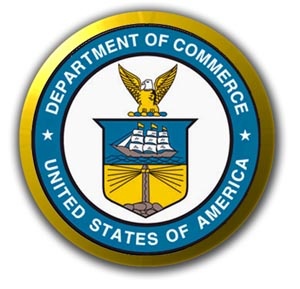 A federal lawsuit moved the U.S. Department of Commerce to hand over thousands of pages of withheld documents needed to write a book, the lawyer of an environmental activist and author said Thursday. Writer, fisherman and environmental activist Alan Stein sued the Commerce Department under the Freedom of Information and Administrative Procedures Acts in July 2015. He claimed the department and two of its agencies — the National Oceanic and Atmospheric Administration and the Office of the Inspector General — had stonewalled his requests for documents he needed for a book he was writing. Last year, Stein told Courthouse News (click here) the planned book required materials from an investigation of Arne Fuglvog, a former fishing vessel operator and fisheries official who spent time in prison for making false statements in fishing quota reports. Read the rest here 08:12 Read The NOAA Oversight Project – Fisherman’s FOIA’s Squeeze NOAA, to see the that James Balsiger, the acting head of the National Marine Fisheries Service, was going to be replaced by fisherman/ Senate staffer Arne Fuglvog who favored catch shares or scientist Brian Rothschild who did not. Click here
A federal lawsuit moved the U.S. Department of Commerce to hand over thousands of pages of withheld documents needed to write a book, the lawyer of an environmental activist and author said Thursday. Writer, fisherman and environmental activist Alan Stein sued the Commerce Department under the Freedom of Information and Administrative Procedures Acts in July 2015. He claimed the department and two of its agencies — the National Oceanic and Atmospheric Administration and the Office of the Inspector General — had stonewalled his requests for documents he needed for a book he was writing. Last year, Stein told Courthouse News (click here) the planned book required materials from an investigation of Arne Fuglvog, a former fishing vessel operator and fisheries official who spent time in prison for making false statements in fishing quota reports. Read the rest here 08:12 Read The NOAA Oversight Project – Fisherman’s FOIA’s Squeeze NOAA, to see the that James Balsiger, the acting head of the National Marine Fisheries Service, was going to be replaced by fisherman/ Senate staffer Arne Fuglvog who favored catch shares or scientist Brian Rothschild who did not. Click here
National Marine Fisheries Service Announces Final Rule to Adjust the 2016 North and South Atlantic Swordfish Quotas
 This final rule adjusts the 2016 annual North and South Atlantic swordfish quotas based on 2015 underharvests and international quota transfers, and modifies the annual quota adjustment public notice in certain circumstances. The final adjusted quota for North Atlantic swordfish is 3,359.4 metric tons (mt) dressed weight (dw). This quota is allocated as follows: the directed category quota = 3,009.4 mt dw; the incidental category = 300 mt dw; and the reserve category = 50 mt dw. The final adjusted quota for South Atlantic swordfish is 75.1 mt dw. Read the rest here National Marine Fisheries Service Announces Proposed Rule To Remove Vessel Upgrade Restrictions For Swordfish Directed And Atlantic Tuna Longline Category Limited Access Permits Read the rest here 16:41
This final rule adjusts the 2016 annual North and South Atlantic swordfish quotas based on 2015 underharvests and international quota transfers, and modifies the annual quota adjustment public notice in certain circumstances. The final adjusted quota for North Atlantic swordfish is 3,359.4 metric tons (mt) dressed weight (dw). This quota is allocated as follows: the directed category quota = 3,009.4 mt dw; the incidental category = 300 mt dw; and the reserve category = 50 mt dw. The final adjusted quota for South Atlantic swordfish is 75.1 mt dw. Read the rest here National Marine Fisheries Service Announces Proposed Rule To Remove Vessel Upgrade Restrictions For Swordfish Directed And Atlantic Tuna Longline Category Limited Access Permits Read the rest here 16:41
Federal Agencies start work on Columbia River fishing deal
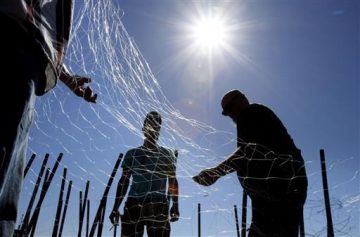 Federal authorities are working on a plan aimed at deciding how much sport, commercial and tribal fishing for salmon and steelhead will be allowed in the Columbia River and its tributaries as part of a long-term agreement starting in 2018. The other main component considered in the environmental review being prepared by the National Marine Fisheries Service and U.S. Fish and Wildlife Service is hatchery production levels. The agencies will use the document as they work to craft an agreement with Idaho, Oregon and Washington, as well as tribes in those states with harvest treaty rights. The length of the agreement has yet to be determined, but a 10-year timeframe is generally supported. Read the story here 16:20
Federal authorities are working on a plan aimed at deciding how much sport, commercial and tribal fishing for salmon and steelhead will be allowed in the Columbia River and its tributaries as part of a long-term agreement starting in 2018. The other main component considered in the environmental review being prepared by the National Marine Fisheries Service and U.S. Fish and Wildlife Service is hatchery production levels. The agencies will use the document as they work to craft an agreement with Idaho, Oregon and Washington, as well as tribes in those states with harvest treaty rights. The length of the agreement has yet to be determined, but a 10-year timeframe is generally supported. Read the story here 16:20
Summer flounder’s new status from “viable” to “concern”reduces allowable catch
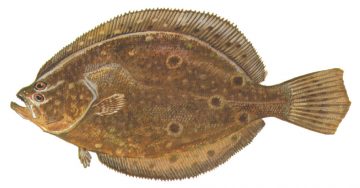 The stock status of most coastal fish did not change in the 2016 N.C. Division of Marine Fisheries Stock Status Report, but one species was reclassified from the 2015 report. Summer flounder moved from “viable” to “concern” based on a 2015 National Marine Fisheries Service Northeast Fisheries Science Center benchmark stock assessment for U.S. waters north of Cape Hatteras. The assessment indicated the stock of summer flounder was not overfished but overfishing was occurring, according to a NCDMF news release. As a result of the stock assessment, federal fisheries authorities lowered the allowable biological catch by 29 percent, which lowered the state-by-state commercial quotas proportionately. North Carolina receives the highest commercial quota share at 27.4 percent. Read the rest here – Read NCDMR Stock Assessment here 14:51
The stock status of most coastal fish did not change in the 2016 N.C. Division of Marine Fisheries Stock Status Report, but one species was reclassified from the 2015 report. Summer flounder moved from “viable” to “concern” based on a 2015 National Marine Fisheries Service Northeast Fisheries Science Center benchmark stock assessment for U.S. waters north of Cape Hatteras. The assessment indicated the stock of summer flounder was not overfished but overfishing was occurring, according to a NCDMF news release. As a result of the stock assessment, federal fisheries authorities lowered the allowable biological catch by 29 percent, which lowered the state-by-state commercial quotas proportionately. North Carolina receives the highest commercial quota share at 27.4 percent. Read the rest here – Read NCDMR Stock Assessment here 14:51
Yurok Tribe Files Intent to Sue National Marine Fisheries Service and the Bureau of Reclamation
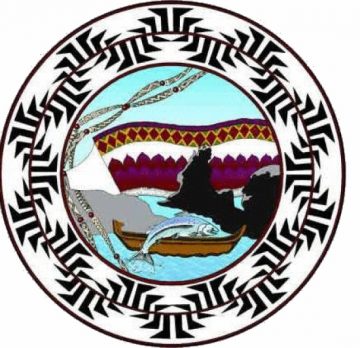 In response to massive fish disease outbreaks in back-to-back years on the Klamath River, the Yurok Tribe submitted a 60-day notice of intent to sue the National Marine Fisheries Service and the Bureau of Reclamation. “We cannot stand by and do nothing while our salmon hover over the brink of extinction,” said Thomas P. O’Rourke Sr., Chairman of the Yurok Tribe. “We will not continue to watch water managers jeopardize the fate of our fish and our river.” 91 percent of the juvenile, Klamath salmon were infected with a deadly parasite in 2015, as were a nearly identical number of fish in 2014. Given the nearly 100 percent mortality rate associated with the disease, approximately 90 percent of the Chinook salmon and likely an equal quantity of coho died in the main-stem Klamath River during those years, according to the notice. This year’s predicted adult salmon run is one of the lowest on record, which forced the Yurok Tribe to make a difficult decision to completely forgo all commercial fishing in 2016. Read the rest here 15:22
In response to massive fish disease outbreaks in back-to-back years on the Klamath River, the Yurok Tribe submitted a 60-day notice of intent to sue the National Marine Fisheries Service and the Bureau of Reclamation. “We cannot stand by and do nothing while our salmon hover over the brink of extinction,” said Thomas P. O’Rourke Sr., Chairman of the Yurok Tribe. “We will not continue to watch water managers jeopardize the fate of our fish and our river.” 91 percent of the juvenile, Klamath salmon were infected with a deadly parasite in 2015, as were a nearly identical number of fish in 2014. Given the nearly 100 percent mortality rate associated with the disease, approximately 90 percent of the Chinook salmon and likely an equal quantity of coho died in the main-stem Klamath River during those years, according to the notice. This year’s predicted adult salmon run is one of the lowest on record, which forced the Yurok Tribe to make a difficult decision to completely forgo all commercial fishing in 2016. Read the rest here 15:22
NMFS looks at catch reduction of Atlantic herring
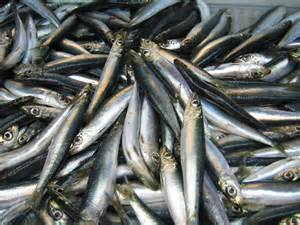 The National Marine Fisheries Service might reduce the herring catch limit by about 3 percent to slightly less than 105,000 metric tons. The limit was a little less than 108,000 metric tons for the 2013 to 2015 period; any new limit would apply to the years 2016 to 2018. The proposal is up for public comment until July 21. The herring fishery takes place off of New England and the mid-Atlantic, but is principally based in Maine and Massachusetts, with a substantial amount of herring also coming ashore in Rhode Island and New Jersey. It was worth a little less than $30 million in 2014, when fishermen caught about 92,000 metric tons. Read the rest here 09:16
The National Marine Fisheries Service might reduce the herring catch limit by about 3 percent to slightly less than 105,000 metric tons. The limit was a little less than 108,000 metric tons for the 2013 to 2015 period; any new limit would apply to the years 2016 to 2018. The proposal is up for public comment until July 21. The herring fishery takes place off of New England and the mid-Atlantic, but is principally based in Maine and Massachusetts, with a substantial amount of herring also coming ashore in Rhode Island and New Jersey. It was worth a little less than $30 million in 2014, when fishermen caught about 92,000 metric tons. Read the rest here 09:16
Chris Elkins, Ph.D., President of the CCA of NC calls NC marine fisheries advisory committee a sham!
 All coastal states in our nation, except North Carolina, have a Joint Enforcement Agreement with the National Marine Fisheries Service because a JEA makes sense: It saves money and aids law enforcement. A special legislatively mandated group called the JEA Advisory Committee has been studying whether North Carolina should enter into a JEA with the National Marine Fisheries Service. A JEA would allow enforcement of federal fisheries rules by N.C. Marine Patrol officers and bring hundreds of thousands of dollars to the patrol. On June 1, the committee, charged with advising the legislature on the JEA, met in New Bern. It has become clear that the committee is indisputably a sham. Read the rest here 19:18
All coastal states in our nation, except North Carolina, have a Joint Enforcement Agreement with the National Marine Fisheries Service because a JEA makes sense: It saves money and aids law enforcement. A special legislatively mandated group called the JEA Advisory Committee has been studying whether North Carolina should enter into a JEA with the National Marine Fisheries Service. A JEA would allow enforcement of federal fisheries rules by N.C. Marine Patrol officers and bring hundreds of thousands of dollars to the patrol. On June 1, the committee, charged with advising the legislature on the JEA, met in New Bern. It has become clear that the committee is indisputably a sham. Read the rest here 19:18
South Atlantic Fishery Management Council propose changes to Yellowtail Snapper fishery
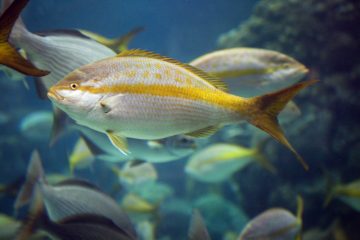 The change comes following requests from a group of Florida Keys fishermen, as yellowtail snapper are primarily harvested in the Keys. The commercial yellowtail fishery was closed in October in 2014, after National Marine Fisheries Service projected the fishery would meet its annual catch limit of 1.6 million pounds. The fishermen want the season to end in July when there is less fishing pressure and the fish are spawning, said Bill Kelly, executive for the Florida Keys Commercial Fishermen’s Association. “The closure should occur when prices are at their lowest and demand is at its lowest,” Kelly said. “Also, the season should be closed when the fish is spawning.” In addition, commercial fishermen have lobbied to reallocate some of the recreational catch to the commercial side, as the recreational side has only caught a little more than half of its 1.4 million pound annual limit, according to federal fishery managers. Read the rest here 08:40
The change comes following requests from a group of Florida Keys fishermen, as yellowtail snapper are primarily harvested in the Keys. The commercial yellowtail fishery was closed in October in 2014, after National Marine Fisheries Service projected the fishery would meet its annual catch limit of 1.6 million pounds. The fishermen want the season to end in July when there is less fishing pressure and the fish are spawning, said Bill Kelly, executive for the Florida Keys Commercial Fishermen’s Association. “The closure should occur when prices are at their lowest and demand is at its lowest,” Kelly said. “Also, the season should be closed when the fish is spawning.” In addition, commercial fishermen have lobbied to reallocate some of the recreational catch to the commercial side, as the recreational side has only caught a little more than half of its 1.4 million pound annual limit, according to federal fishery managers. Read the rest here 08:40
Northeast Regional Planning Body (RPB) releases draft Northeast Regional Ocean Plan
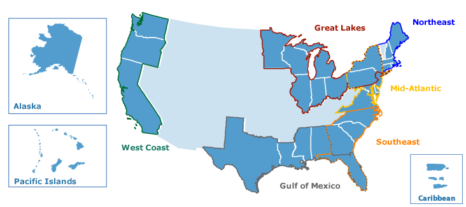 The Northeast Regional Planning Body (RPB) is proud to release the draft Northeast Regional Ocean Plan for public review and comment. Several years of public engagement, scientific study and data analysis, and collaboration has led to this draft, and the RPB looks forward to hearing the feedback of everyone who is interested in the future of New England’s ocean and its resources. The RPB wants your feedback on this draft Plan. The public comment deadline is July 25, 2016, and you can comment on each chapter electronically at each chapter landing page, in-person at any of our upcoming public comment meetings, through the comment form below, or by submitting written comments to: Betsy Nicholson, NE RPB Federal Co-lead National Oceanic and Atmospheric Administration National Marine Fisheries Service, Northeast Regional Office 55 Great Republic Drive Gloucester, MA 01930-2276. You may also provide comments by sending an e-mail to: [email protected]. Here it is, all 198 pages of it click here 17:36
The Northeast Regional Planning Body (RPB) is proud to release the draft Northeast Regional Ocean Plan for public review and comment. Several years of public engagement, scientific study and data analysis, and collaboration has led to this draft, and the RPB looks forward to hearing the feedback of everyone who is interested in the future of New England’s ocean and its resources. The RPB wants your feedback on this draft Plan. The public comment deadline is July 25, 2016, and you can comment on each chapter electronically at each chapter landing page, in-person at any of our upcoming public comment meetings, through the comment form below, or by submitting written comments to: Betsy Nicholson, NE RPB Federal Co-lead National Oceanic and Atmospheric Administration National Marine Fisheries Service, Northeast Regional Office 55 Great Republic Drive Gloucester, MA 01930-2276. You may also provide comments by sending an e-mail to: [email protected]. Here it is, all 198 pages of it click here 17:36
Will North Carolina give up even more sovereignty to the National Marine Fisheries Service?
 Next week (June 1) will be a significant day if you are concerned about Federal control of our lives. There will be a meeting of an “advisory group” in New Bern to consider whether or not the state should sign a “Joint Law Enforcement Agreement” to impose greater Federal control over the regulation of fishing within the state’s waters. Note the last part…within the state’s waters. Click here to read the announcement. Most people, even including fishermen, will not be in New Bern on June 1. The decision of whether to recommend to give this power to the National Marine Fisheries Service will be made by a small group of people who serve on this panel representing various special interest groups who have a stake in fishing regulations. As always, the dominant special interests are recreational fishing interests vs. commercial fishing interests. Read the rest here 10:03
Next week (June 1) will be a significant day if you are concerned about Federal control of our lives. There will be a meeting of an “advisory group” in New Bern to consider whether or not the state should sign a “Joint Law Enforcement Agreement” to impose greater Federal control over the regulation of fishing within the state’s waters. Note the last part…within the state’s waters. Click here to read the announcement. Most people, even including fishermen, will not be in New Bern on June 1. The decision of whether to recommend to give this power to the National Marine Fisheries Service will be made by a small group of people who serve on this panel representing various special interest groups who have a stake in fishing regulations. As always, the dominant special interests are recreational fishing interests vs. commercial fishing interests. Read the rest here 10:03
Texas shrimp industry battles hostile trends as season closes for two months
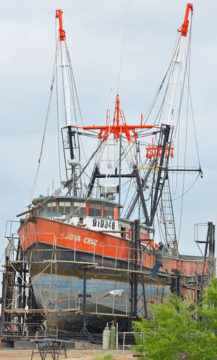 The Texas Parks and Wildlife Department’s Coastal Fisheries Division decided May 15 was a good time to close the state’s shrimp season because, according to its sampling, the average size and number of brown shrimp in Texas coastal waters is higher than the 20-year average. Texas closes its waters to shrimping from the coast to nine nautical miles out for roughly two months each year to give little shrimp time to grow before being harvested. The National Marine Fisheries Service typically imposes a closure out to 200 nautical miles at the same time. More, bigger shrimp is potentially good news for the state’s struggling shrimp industry, since big shrimp fetch higher prices, according to Andrea Hance, shrimp fleet owner and executive director of the Texas Shrimp Association. Read the rest here 19:27
The Texas Parks and Wildlife Department’s Coastal Fisheries Division decided May 15 was a good time to close the state’s shrimp season because, according to its sampling, the average size and number of brown shrimp in Texas coastal waters is higher than the 20-year average. Texas closes its waters to shrimping from the coast to nine nautical miles out for roughly two months each year to give little shrimp time to grow before being harvested. The National Marine Fisheries Service typically imposes a closure out to 200 nautical miles at the same time. More, bigger shrimp is potentially good news for the state’s struggling shrimp industry, since big shrimp fetch higher prices, according to Andrea Hance, shrimp fleet owner and executive director of the Texas Shrimp Association. Read the rest here 19:27
Small Boat Fishermen Worry New Rules Won’t Come in Time to Save N. Atlantic Scallops
 A quandary over scallop rules has two groups of fishermen in Maine at odds over the increasingly lucrative shellfish. Kristan Porter, is an independent fisherman who catches lobsters for most of the year with his boat “Brandon Jay.” But for additional income, for five months each year, he and the two other men on his boat have begun collecting scallops. Eric Hansen, of New Bedford, Massachusetts, is one of the permit holders that aren’t bound by the same quota that Porter and others follow. Hansen, who typically fishes south of Maine, returned to the Gulf of Maine this year for the first time in decades. His family business obtained one of the permits back in 1994 for free that now could be sold for millions of dollars. Read the rest here 08:41
A quandary over scallop rules has two groups of fishermen in Maine at odds over the increasingly lucrative shellfish. Kristan Porter, is an independent fisherman who catches lobsters for most of the year with his boat “Brandon Jay.” But for additional income, for five months each year, he and the two other men on his boat have begun collecting scallops. Eric Hansen, of New Bedford, Massachusetts, is one of the permit holders that aren’t bound by the same quota that Porter and others follow. Hansen, who typically fishes south of Maine, returned to the Gulf of Maine this year for the first time in decades. His family business obtained one of the permits back in 1994 for free that now could be sold for millions of dollars. Read the rest here 08:41
What the fish in Alaska’s oceans are eating — and what that can tell us
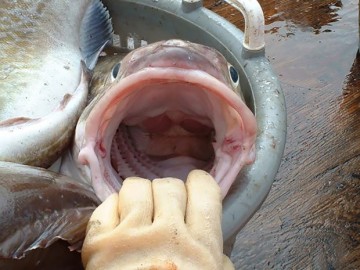 Ever wonder what eats the salmon that don’t make it back to Bristol Bay? Or what fish are cannibals? A new database released online in late March by the National Marine Fisheries Service offers a glimpse into fish diets, based on decades of study of their stomach contents. It ranges from commonly known species like halibut, Pacific cod and pollock, to lesser-known fish, like sculpins, snailfish and even alligatorfish. Herring and salmon also make an appearance, although they aren’t the focus. Kerim Aydin, a supervisory fisheries biologist at the in Seattle, said the database includes collections that have been in the works since the 1980s, and is largely focused on commercial groundfish species. Read the rest here 10:55
Ever wonder what eats the salmon that don’t make it back to Bristol Bay? Or what fish are cannibals? A new database released online in late March by the National Marine Fisheries Service offers a glimpse into fish diets, based on decades of study of their stomach contents. It ranges from commonly known species like halibut, Pacific cod and pollock, to lesser-known fish, like sculpins, snailfish and even alligatorfish. Herring and salmon also make an appearance, although they aren’t the focus. Kerim Aydin, a supervisory fisheries biologist at the in Seattle, said the database includes collections that have been in the works since the 1980s, and is largely focused on commercial groundfish species. Read the rest here 10:55
Independent scientists need not apply – NMFS denies SMAST Industry paid RSA Funding
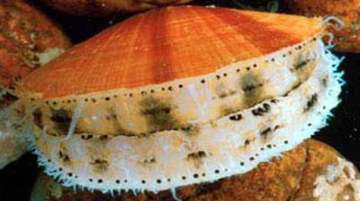 For almost 20 years now, SMAST has worked diligently alongside our fishermen to improve fishery science. Kevin’s research has earned him their respect, earned them a ton of money and earned New Bedford its position as the nation’s top fishing port. The drop camera survey he pioneered to count sea scallops on Georges Bank in 1999 was a game changer that helped to rescue an ailing industry. Anyone on the waterfront can attest to that. He did it by providing independent evidence that what fishermen had been saying was correct. There were plenty of scallops out there waiting to be harvested in spite of what the government survey would have everyone believe. Barney Frank took those survey pictures to Bill Daley, who was Secretary of Commerce at the time. Daley listened and New Bedford’s ship came in. It may now be departing. Read the op-ed here 07:27
For almost 20 years now, SMAST has worked diligently alongside our fishermen to improve fishery science. Kevin’s research has earned him their respect, earned them a ton of money and earned New Bedford its position as the nation’s top fishing port. The drop camera survey he pioneered to count sea scallops on Georges Bank in 1999 was a game changer that helped to rescue an ailing industry. Anyone on the waterfront can attest to that. He did it by providing independent evidence that what fishermen had been saying was correct. There were plenty of scallops out there waiting to be harvested in spite of what the government survey would have everyone believe. Barney Frank took those survey pictures to Bill Daley, who was Secretary of Commerce at the time. Daley listened and New Bedford’s ship came in. It may now be departing. Read the op-ed here 07:27

































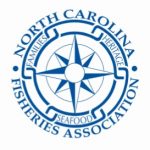
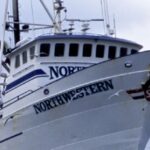





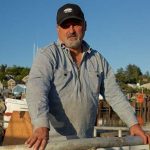
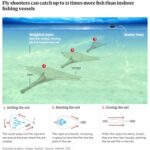
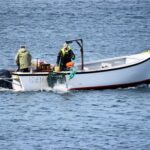
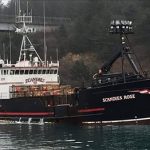
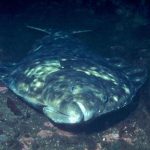
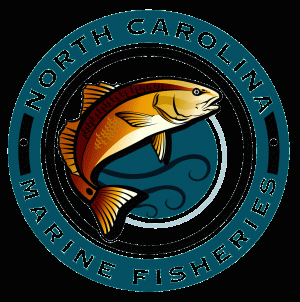



National Marine Fisheries Service Announces Industry-Funded Monitoring Amendment Public Hearings and Comment Period
Share this post